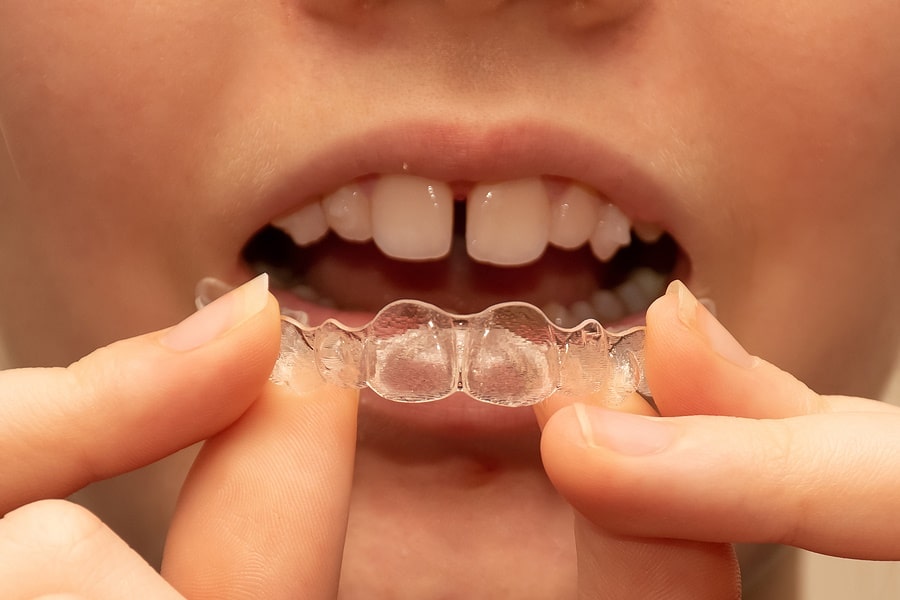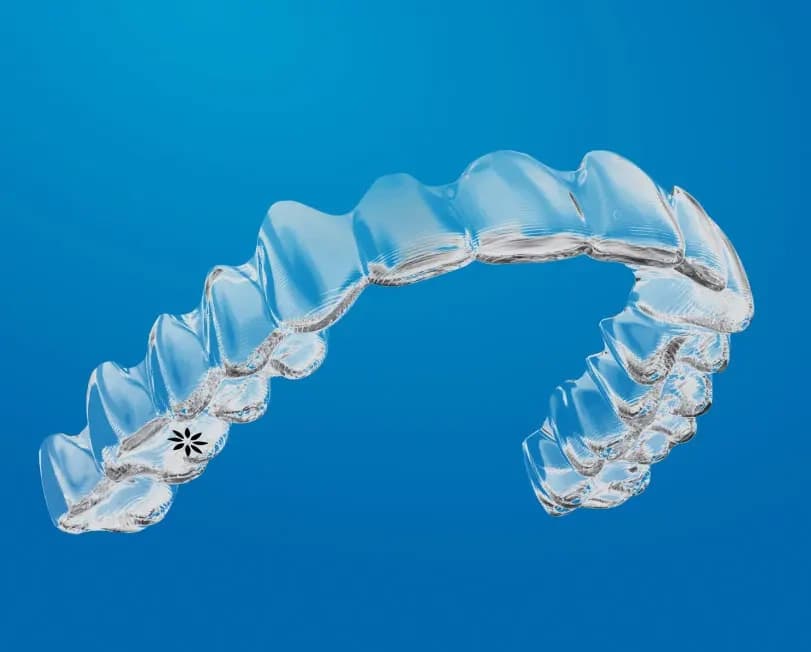What to Anticipate Throughout Your Invisalign Journey: A Comprehensive Overview
What to Anticipate Throughout Your Invisalign Journey: A Comprehensive Overview
Blog Article
Invisalign vs. Traditional Dental braces: Which Option Is Right for You?
When taking into consideration orthodontic treatment, the selection in between Invisalign and traditional dental braces presents numerous important factors that merit cautious evaluation. Invisalign provides a very discreet option with removable aligners, while typical braces supply a more noticeable yet efficient option for extreme imbalance.
Review of Treatment Alternatives

In comparison, traditional braces contain steel braces and wires that are bonded to the teeth. This method applies continuous stress with time to accomplish alignment. While efficient for intricate orthodontic concerns, typical braces call for regular sees for adjustments and can pose difficulties in maintaining oral health due to the trouble of cleaning about brackets and cords.
Both options have their advantages, and the option commonly hinges on specific dental conditions, way of living choices, and individual compliance. Ultimately, seeking advice from an orthodontic expert is important for establishing one of the most suitable treatment strategy tailored to specific needs. Understanding the nuances of each alternative can significantly affect the total success of orthodontic treatment.
Aesthetic Considerations
A considerable aspect affecting the option in between Invisalign and standard braces is the visual appeal each therapy supplies. Invisalign aligners are crafted from clear plastic, making them basically unseen when put on. This very discreet look is especially attracting teenagers and adults who might feel uneasy concerning their orthodontic therapy. The capability to keep a natural smile throughout the positioning process can substantially boost the individual's confidence in specialist and social setups.
On the other hand, traditional braces include metal braces and wires, which can be much more visible. While innovations in orthodontic innovation have actually caused the advancement of smaller braces and tinted elastics, typical braces still preserve a more obvious profile. For some individuals, the visibility of braces may prevent them from looking for needed therapy.
Inevitably, the choice between Invisalign and typical braces may rest on personal preferences concerning visual appeals. Clients that prioritize discernment typically favor Invisalign, while those who are less worried regarding presence might select traditional dental braces. Recognizing the visual effects of each choice is vital for making an informed choice that lines up with one's lifestyle and choices.
Comfort and Convenience

In regards to convenience, Invisalign aligners are detachable, allowing individuals to enjoy their preferred foods without restriction and maintain optimum oral health. Cleaning and flossing are simplified, as the aligners can be taken out during these regimens, whereas standard dental braces need cautious navigating around brackets and cables.
In comparison, conventional braces necessitate routine changes, making them less practical for those with busy schedules. In general, the convenience and check my reference comfort of Invisalign make it an appealing choice for numerous people looking for orthodontic therapy.
Therapy Duration and Effectiveness
While both Invisalign and standard dental braces work in remedying oral misalignments, the period of treatment can vary dramatically between the two options. Commonly, Invisalign therapy can take anywhere from 12 to 18 months, relying on the complexity of the situation. The clear aligners work by progressively moving teeth into their wanted positions, and regular follow-ups with an orthodontist assistance guarantee progression continues to be on track.
On the other hand, conventional braces usually call for a longer dedication, normally ranging from 18 months to three years. This results from their set nature and using cords and brackets, which can be more effective for complex instances and extreme imbalances (Invisalign). The therapy efficiency of standard braces is well-documented, as they permit specific adjustments and higher control over tooth motion
Eventually, the option in between Invisalign and conventional dental braces may rest on both the anticipated treatment period and the particular oral issues at hand. Consulting with an orthodontist is vital, as they can give customized suggestions based on private demands, making certain the selected technique straightens with wanted end results and timeframes.
Price Comparison and Insurance Policy Alternatives
Cost plays a substantial role in the decision-making process for people thinking about orthodontic therapy, whether going with Invisalign or traditional dental braces. On standard, the cost of Invisalign arrays from $3,000 to $8,000, while conventional dental braces usually set you back between $2,000 and $6,000. Aspects affecting these prices include the complexity of the instance, the period of treatment, and geographical place.
Insurance insurance coverage can significantly influence out-of-pocket expenditures. Numerous dental insurance policy strategies offer partial protection for orthodontic therapies, however the specifics can vary commonly. this hyperlink It is important for patients to review their insurance coverage to figure out the degree of protection for either alternative. Normally, traditional braces might be more frequently covered by insurance policy strategies compared to Invisalign, which some insurers classify as an aesthetic procedure.
Additionally, a number of orthodontic methods supply flexible layaway plan, making both therapy choices more obtainable. Clients ought to ask about potential funding options and discounts for ahead of time payments. Examining the overall price, consisting of insurance coverage benefits and layaway plan, is necessary for making a notified decision that aligns with both aesthetic preferences and spending plan considerations.

Conclusion
In summary, the option in between Invisalign and conventional dental braces pivots on multiple elements, including aesthetic preferences, convenience, therapy period, and cost. Invisalign provides a very discreet, removable choice that promotes oral health and nutritional adaptability, while standard braces might be preferable for intricate oral problems and often come at a reduced rate factor. Inevitably, assessment with an orthodontist is vital to examine right here private conditions and establish one of the most suitable treatment option for achieving ideal oral placement.
When taking into consideration orthodontic treatment, the option between Invisalign and standard braces provides a number of crucial elements that warrant careful analysis.Contrasting Invisalign and conventional braces exposes unique therapy options for orthodontic modification.While both Invisalign and conventional dental braces are effective in dealing with dental imbalances, the period of therapy can differ significantly in between the 2 options.Expense plays a significant duty in the decision-making procedure for individuals taking into consideration orthodontic therapy, whether opting for Invisalign or standard braces.In summary, the selection between Invisalign and conventional dental braces hinges on multiple variables, consisting of visual preferences, convenience, treatment duration, and expense.
Report this page